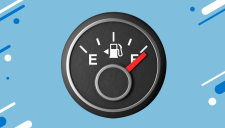5 Emergencies & what to do

Published on 2nd November, 2020 at 12:16 pm
We don’t like thinking about accidents, but they happen, and the more prepared you are, the better the chance of a positive outcome. Read on to find out what to do in these 5 common emergencies while you wait for a medical response team.
As a Reality Access for Sanlam Group Risk member, you have exclusive access to the free Emergency Medical Response benefit, 24/7. Receive expert telephonic support for any emergency medical condition until a medical team arrives at the scene.
Before you help, do this
There are two key considerations you need to make before you commit to helping someone in distress.
Get help
Amid the shock of the emergency situation you’re facing, you could feel pressure to do the right thing. Once you’ve assessed the situation, call emergency services and be ready to describe the nature of the emergency, suggest Associated Professor Klaus von Pressentin and Dr Dianne Matthews of University of Cape Town’s (UCT) Division of Family Medicine in the School of Public Health and Family Medicine.
If possible, also be ready to share the following details about the person to the emergency medical response dispatcher:
• Name
• Age
• ID number
• Address
• Any diseases they have (if known)
• Any medication they’re prescribed (if available)
• Medical insurance (if any)
• Next of kin contacts
Be the right kind of help in the situation by giving clear directions to the location of the emergency, gathering as much information as possible, staying available on the phone, keeping the phone clear (i.e. don’t get distracted with calls from other people), and offering assistance on arrival of the emergency medical response team. Keep other bystanders from interfering.
Protect yourself
You won’t be much help to someone in distress if you yourself are in danger. Look around and see if there are any potentially harmful situations waiting to happen. “Always remember to attend to your own safety, especially in terms of physical risk (road accident scene and/or risk of exposure to electricity, fire, toxins or poisons, or flooding),” note A/Prof Von Pressentin and Dr Matthews. Be careful to protect yourself from accidental exposure to bodily fluids like blood.
Ask yourself these questions:
• Is the scene safe to enter?
• What is the nature of the person’s illness or injury? And are these life-threatening or not?
• Are there other people available to help?
A calm frame of mind will help you make smart decisions under pressure. “Try to think logically and evaluate whether you are able to help, for example where someone has been electrified or is in the process of drowning,” suggest A/Prof Von Pressentin and Dr Matthews.
As a Reality Access for Sanlam Group Risk member, you have free access to telephonic trauma counselling, 24/7. Receive help in a situation where assault, accidental exposure to HIV or any other trauma has occurred. Learn more about the benefit here.
Get consent
“Remember to introduce yourself to the person in distress and ask for their permission to be helped where feasible,” suggest A/Prof Von Pressentin and Dr Matthews. This includes sharing any first aid experience or training you have and describing your assessment and what you plan to do.
Emergency #1: Bleeding from a deep cut
Step 1: Position
Where possible, get the patient to lie down or rest against something.
Step 2: Apply pressure
Your goal is to prevent blood loss as much as possible while waiting for emergency assistance, so apply pressure to the wound with a clean cloth or piece of gauze. “If blood soaks the material, do not remove it,” caution A/Prof Von Pressentin and Dr Matthews. “Instead, add more cloth or gauze and continue to apply pressure.”
Step 3: If possible, elevate the limb
If the patient is bleeding from a limb wound, elevate the limb above the level of the heart, if possible, to slow bleeding.
Step 4: Dress the wound
“Once the bleeding has been controlled, wash your hands before cleaning and dressing the wound,” suggest A/Prof Von Pressentin and Dr Matthews.
Avoid this
“Avoid applying a tourniquet unless the bleeding is severe and does not respond to direct pressure,” say A/Prof Von Pressentin and Dr Matthews. “Only use a tourniquet if you are trained to do so, and inform the emergency services how long the tourniquet was applied for.”
Dr Waseela Khan, a specialist emergency physician at UCT, also cautions against the common mistake of applying pressure close to the wound instead of directly on it, or continuously dabbing it. “These are ineffective strategies and may worsen the bleed,” she says. “Also avoid applying any home-made remedies onto a bleeding wound, as this has the potential to contaminate it.”
Emergency #2: Fainting
Step 1: Position
“If a person is complaining of dizziness or light-headedness, ask them to sit or lie down,” say A/Prof Von Pressentin and Dr Matthews. If they try to stand up again and feel dizzy, encourage them to stand up slowly and/or to avoid sudden changes in position. “It may help to give the person some fluids to drink, especially if he or she is complaining of thirst,” they suggest.
If they have already fainted, Dr Khan suggests checking the carotid artery in the neck for a pulse – checking the wrist can be unreliable.
Step 2: Gauge the seriousness of the symptoms
The person’s symptoms could be pointing to a variety of conditions, so pay close attention.
• Ask whether they are diabetic, or if they can’t respond, look for a Medic Alert device. “Medic Alert tags are helpful in providing information if a person is unconscious. Places to check for these bands are around the wrist, neck, in the person’s wallet on a card, on their phone or on a sticker on the back of his or her driver’s licence. This information can be helpful to identify the person’s medical condition, such as diabetes and any allergies,” note A/Prof Von Pressentin and Dr Matthews.
• Are they experiencing any of the following…?
o Change in vision or speech;
o Sudden weakness of a limb or limbs, especially when associated with slurred speech and change in sensation (numbness);
o Chest pain;
o Shortness of breath;
o Irregular, rapid or very slow pulse;
o Ongoing vomiting and/or headache.
If so, make a note of this to the emergency medical response team.
Step 3: Check breathing
Unconscious and breathing
“If the person has a pulse, leave them lying on the ground to improve blood return to the brain,” says Dr Khan. If there isn’t recovery after a minute, place the person in the recovery position. “This will keep the airway open and prevents them from choking on vomit or fluids,” explain A/Prof Von Pressentin and Dr Matthews.
What is the recovery position?
“Turn the person on to their left side, with their limbs straightened, their right arm folded across their chest, and their right leg bent to prevent the person from rolling onto their stomach,” explain A/Prof Von Pressentin and Dr Matthews. “If there is a history of trauma or head injury, take care to keep their head, neck, and spine in a neutral alignment.”
Unconscious and not breathing
Start with basic CPR (cardiopulmonary resuscitation).
How to: CPR with breaths
“The basic CPR sequence in a person with no history of COVID-19 commences with chest compressions (30 times) followed by breaths (only if you are willing, trained and able to do so),” say A/Prof Von Pressentin and Dr Matthews. “Give two rescue breaths; these rescue breaths are especially important in the rescue of children and infants, where respiratory issues are the main causes for unconsciousness with absent breathing.
How to: Hands-only CPR
“Aim to administer compressions at a rate of at least 100 compressions per minute,” say A/Prof Von Pressentin and Dr Matthews. Ideally, CPR should be administered by a professional or someone who has been trained in first aid.
Step 4: If possible, use an automated external defibrillator (AED)
“It is important to use an AED as soon as it becomes available, especially in adults, where a heart condition may have resulted in the state of unconsciousness,” urge Assoc Prof von Pressentin and Dr Matthews.
Be cautious
“Although administering a sugary substance to a diabetic may help, remember that it is potentially dangerous to do so in someone with a depressed level of consciousness, as they will have a high risk of aspiration, i.e. breathing in the substance,” says Dr Khan.
Emergency #3: Burn
Step 1: Get to water – fast!
“The priority is to reduce the temperature of the skin that’s involved,” says Dr Khan. Instinctively you may think to run the limb under water to cool the burn for a few minutes, but it’s important to keep it under cool running water (about 15°C) for at least 20 minutes, suggest the doctors. In fact, A/Prof Von Pressentin and Dr Matthews note this measure may still be beneficial up to three hours after the burn was sustained.
“If you cannot do this, pour cool water on the area or cover it with a clean, wet cloth,” they recommend. “The burn should be cooled until the pain has lessened.” Dr Khan adds that there are several over-the-counter cooling gels available commercially, which serve to cool the burn, thereby reducing pain.
Step 2: Clean the wound
It’s going to be uncomfortable, but it’s important to clean the wound before dressing it. After thoroughly disinfecting your own hands, remove anything on or near the burn, such as jewellery or clothing.
Step 3: Dress the wound
Once the pain has subsided, cover the burn loosely with a fluff-free, non-adhesive dressing, suggest A/Prof Von Pressentin and Dr Matthews. Dr Khan suggests covering it with cling film, which will form a layer over the exposed nerve endings in the burn and not only reduce pain, but also protect the skin from becoming contaminated. “If a large area of the limb is affected, avoid wrapping the film too tightly, as this can impair circulation,” she cautions.
Step 4: Observe for shock
While you wait for further medical assistance, monitor the person for signs of shock. “Signs of shock include a pale face; cold or clammy skin; a rapid pulse; fast, shallow breathing; yawning and unconsciousness,” say A/Prof Von Pressentin and Dr Matthews.
Avoid this
• Do not put sugar, butter, or ointment straight onto a burn wound, contrary to popular myths.
• Avoid putting water which is too cold in burns, especially ice or icy water.
Emergency #4: Suspected heart attack
If someone begins to complain of chest pain, it’s important not to assume it’s a heart attack, even though it’s possible. “People suffer chest pain for a range of reasons,” say A/Prof Von Pressentin and Dr Matthews. These range from gastritis, muscular pain, lung pathologies, and a heart attack. “Any chest pain that lasts for more than 15 minutes should be considered as serious,” they add.
Step 1: Position
Help the person to get into a comfortable position. “This may be in a half-sitting position, with supports placed for the back and neck,” suggest A/Prof Von Pressentin and Dr Matthews. “If you are outdoors, then kneeling behind the person to provide support may also be helpful.”
Step 2: Ask about medication
If the patient has a pre-existing heart condition, they may be on prescribed medication for this. “Assist the patient to take any prescribed medication for chest pain,” say A/Prof Von Pressentin and Dr Matthews. Dr Khan adds: “If they are able to and can confirm that they have no allergies, and they are not vomiting, offer them 300mg of aspirin.”
Step 3: Prioritise calmness and comfort
“It is important to keep the patient calm by constantly reassuring them,” suggest A/Prof Von Pressentin and Dr Matthews. “Loosen any tight clothing at the neck and waist to assist breathing.” While waiting for medical assistance, ensure that any medical history is collected and all chronic medication accompanies the person, says Dr Khan.
Step 4 (in the case of unconsciousness)
If the patient becomes unconscious or unresponsive, immediately begin CPR and ensure you have called for professional emergency medical help.
Avoid these
• Giving any food, fluids or stimulants such as alcohol, cigarettes, tea or coffee to the person.
• Transporting the person with chest pain in a car, as any added exertion could cause more damage to the heart, warn A/Prof Von Pressentin and Dr Matthews.
Emergency #5: Choking
For adults or children older than one year
If someone nearby is choking on an object, see whether they’re able to cough forcefully, speak or breathe. “If they are able to perform any of these actions, avoid contact with them and instead encourage them to cough,” say A/Prof Von Pressentin and Dr Matthews. If they’re unable to do any of these, follow these steps:
Try back blows
Dr Khan outlines the steps below:
• Stand behind the person and slightly to one side. Support their chest with one hand. Lean them forward so the object blocking their airway will come out of their mouth, rather than moving further down.
• Give up to five sharp blows between their shoulder blades with the heel of your hand. The heel is between the palm of your hand and your wrist.
• Check if the blockage has cleared. “If it hasn’t, try abdominal thrusts, or the Heimlick manoeuvre,” she suggests.
Do the Heimlich manoeuvre
• Stand behind the person ready to support him/her if they become unconscious.
• Find the top of their hip bones, place a foot between their feet for a solid position and proceed to place your fist midline, just above your other hand.
• Hold the fist with the other hand and press inward and upward with a sudden forceful thrust.
• Keep giving abdominal thrusts until either the object is removed, or the person becomes unconscious.
What to do if the person loses consciousness
• As the patient collapses, slowly lower them to the ground.
• Check for signs of normal breathing for no more than 10 seconds.
• If the person does not show signs of normal breathing then follow the steps for CPR.
For children under one year old
If the child can cough forcefully or breathe, observe only, and do not interfere, allowing them to attempt coughing up the foreign body or object. Follow the below steps if the child is unable to cough or breathe, or the breathing becomes noisy (a high-pitched sound), or they start to turn blue.
Step 1:
Kneel or sit with child face down on your lap, resting on your forearm. Rest your forearm on your lap or thigh for support.
Step 2:
Using the heel of your free hand, give five forceful back blows between the child’s shoulder blades.
Step 3:
“If back blows don’t relieve the choking and the baby or child is still conscious, give chest thrusts to children under one year or abdominal thrusts to children over one year,” says Dr Khan. “These manoeuvres create an artificial cough and helping to dislodge the object.”
Step 4:
Still request medical help. “Even if the object has come out, get medical help. Part of the object might have been left behind, or your child might have been hurt by the procedure,” says Dr Khan.
Want to learn more?
We send out regular emails packed with useful advice, ideas and tips on everything from saving and investing to budgeting and tax. If you're a Sanlam Reality member and not receiving these emails, update your contact details now.
Update Now







